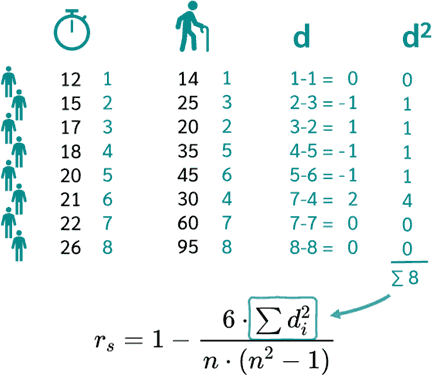Two-Way Analysis of Variance (ANOVA)
I. What is Two-Way Analysis of Variance (ANOVA)?
Two-Way Analysis of Variance (ANOVA), also known as factorial ANOVA, is a statistical technique used to analyze the effects of two or more independent variables on a dependent variable. It is often used in health research to investigate the combined effects of multiple factors on health outcomes.
II. Purpose:
To test for significant differences among means of multiple groups when there are two independent variables (factors).
III. Factors:
Qualitative: Variables with categorical or nominal levels.
Independent: Factors that are manipulated or controlled by the researcher.
IV. Model:
Y = μ + α_i + β_j + αβ_ij + ε_ijk
where:
Y: Dependent variable
μ: Population mean
αi: Main effect of factor A (i = 1, 2, ..., a)
βj: Main effect of factor B (j = 1, 2, ..., b)
αβij: Interaction effect between factors A and B
εijk: Error term (i, j, k = indices for replications)
V. Assumptions:
Normality of error terms
Homogeneity of variances
The data is normally distributed.
The observations are independent.
The effects of the two factors are additive.
VI. Hypothesis Testing:
Null Hypothesis (H0): All means are equal.
Alternative Hypothesis (Ha): At least one mean is different.
VII. Test Statistics:
F-test for main effects: Compares the variance between group means to the variance within groups.
F-test for interaction effect: Compares the variance explained by the interaction to the variance within groups.
VIII. Interpretation:
If the F-test is significant, it indicates that there is a statistically significant difference among group means.
The interaction effect tests whether the relationship between one factor and the dependent variable is different at different levels of the other factor.
IX. Post-hoc Tests:
If significant main effects or interaction effects are found, post-hoc tests (e.g., Tukey's HSD, Fisher's LSD) can be used to determine which specific groups differ significantly from each other.
X. Advantages:
Tests for effects of multiple independent variables simultaneously.
Identifies interaction effects between variables.
XI. Disadvantages:
Assumes linear relationships between variables.
May not be appropriate for nonparametric data.
XII. Applications of Two-Way ANOVA in Health Research:
1. Drug Efficacy Studies:
To compare the effectiveness of different drug treatments or combinations under various conditions (e.g., age, sex, disease severity).
2. Clinical Trial Design:
To optimize trial design by identifying factors that interact to affect treatment outcomes.
To evaluate the efficacy of treatments across subgroups.
3. Disease Risk Factor Analysis:
To determine the combined effects of two or more risk factors (e.g., smoking, diet, genetics) on disease incidence or mortality.
To identify subgroups at higher risk based on specific combinations of factors.
4. Epidemiological Studies:
To investigate the associations between exposure to multiple environmental or lifestyle factors and health outcomes.
To tease out the independent and interactive effects of factors on disease risk.
5. Health Behavior Change Interventions:
To compare the effectiveness of different intervention strategies for promoting health behaviors (e.g., exercise, healthy eating) across different population segments.
To identify factors that influence the success of interventions.
Advantages of Using Two-Way ANOVA in Health Research:
Analyzes the effects of multiple factors simultaneously.
Provides insights into interactions between factors.
Allows for the identification of subgroups with different treatment responses or risk profiles.
Helps to identify factors that confound the relationship between variables.
Limitations of Two-Way ANOVA:
Assumes that the data is normally distributed and the variances are equal.
Requires a sufficient sample size for each subgroup.
Can be difficult to interpret when the interaction terms are significant.
Example:
A researcher investigates the effects of age (young, old) and smoking status (smoker, non-smoker) on the development of cardiovascular disease. A two-way ANOVA is conducted to analyze the data and determine whether there is an interaction between age and smoking.
......................................................................................................
👉 For the data analysis, please go to my Youtube(Ads) channel to Watch Video (Video Link) in
Youtube Channel (Channel Link) and Download(Ads) video.
💗 Thanks to Subscribe(channel) and Click(channel) on bell 🔔 to get more videos!💗!!
- Tell: (+855) - 96 810 0024
- Telegram: https://t.me/sokchea_yann
- Facebook Page: https://www.facebook.com/CambodiaBiostatistics/
- TikTok: https://www.tiktok.com/@sokcheayann999
- STATA for dataset restructuring, descriptive and analytical data analysis
- SPSS for dataset restructuring, data entry, data check, descriptive, and analytical data analysis
- Epi-Info for building questionnaires, data check, data entry, descriptive, and analytical data analysis
- Epidata-Analysis for dataset restructuring, descriptive and analytical data analysis
- Epi-Collect for building questionnaires, remote data entry, mapping, and data visualization
- Epidata-Entry for building questionnaires, data check, data entry, and data validation
ABA Account-holder name: Sokchea YAN
ABA Account number: 002 996 999
ABA QR Code:
or tap on link below to send payment:
https://pay.ababank.com/iT3dMbNKCJhp7Hgz6
✌ Have a nice day!!! 💞



.png)



Comments
Post a Comment